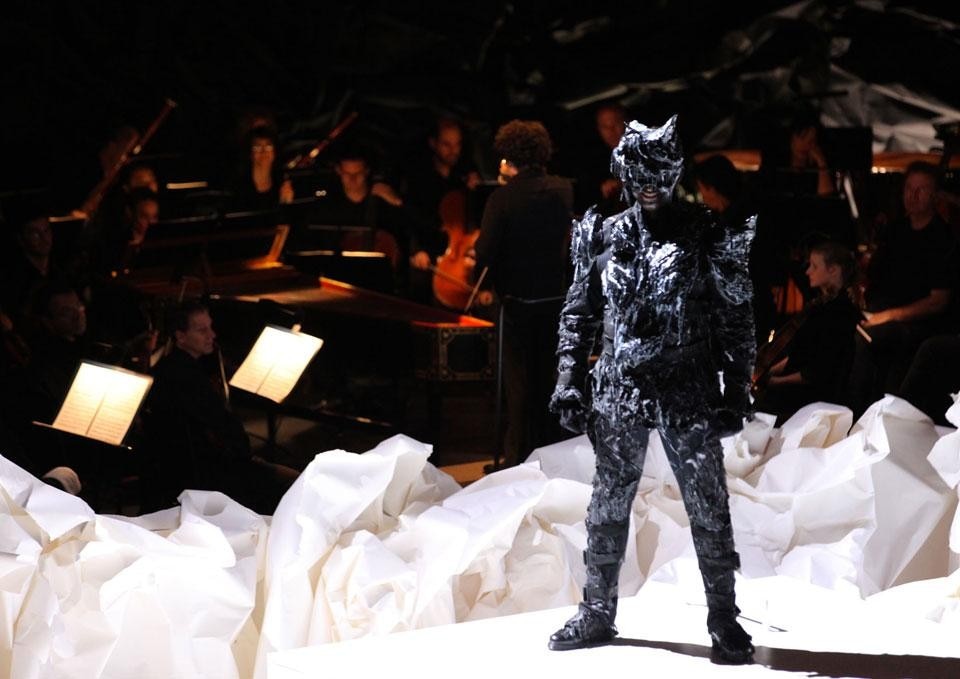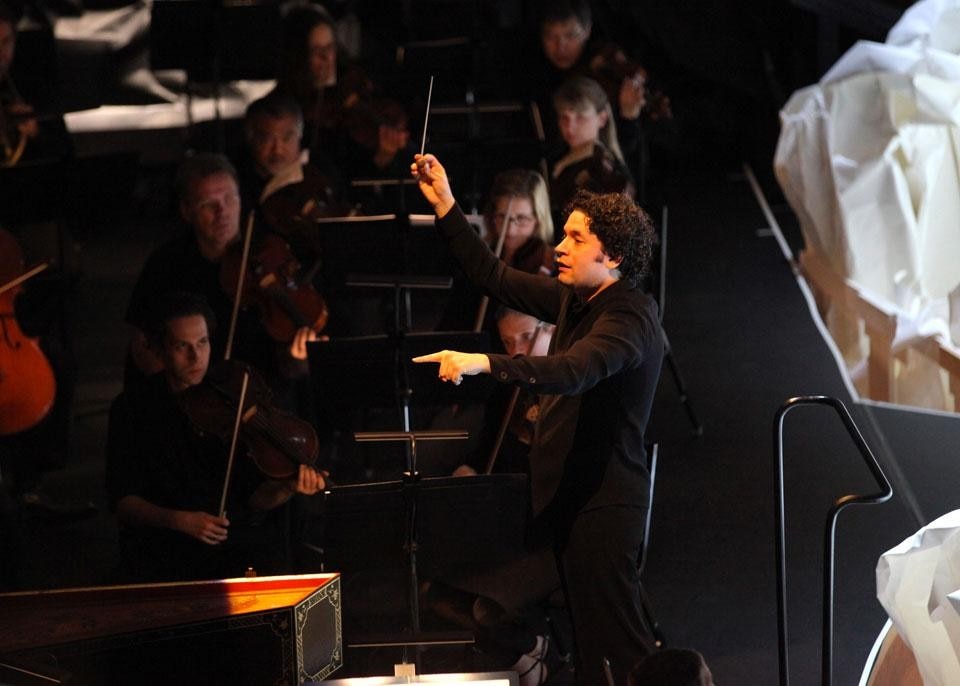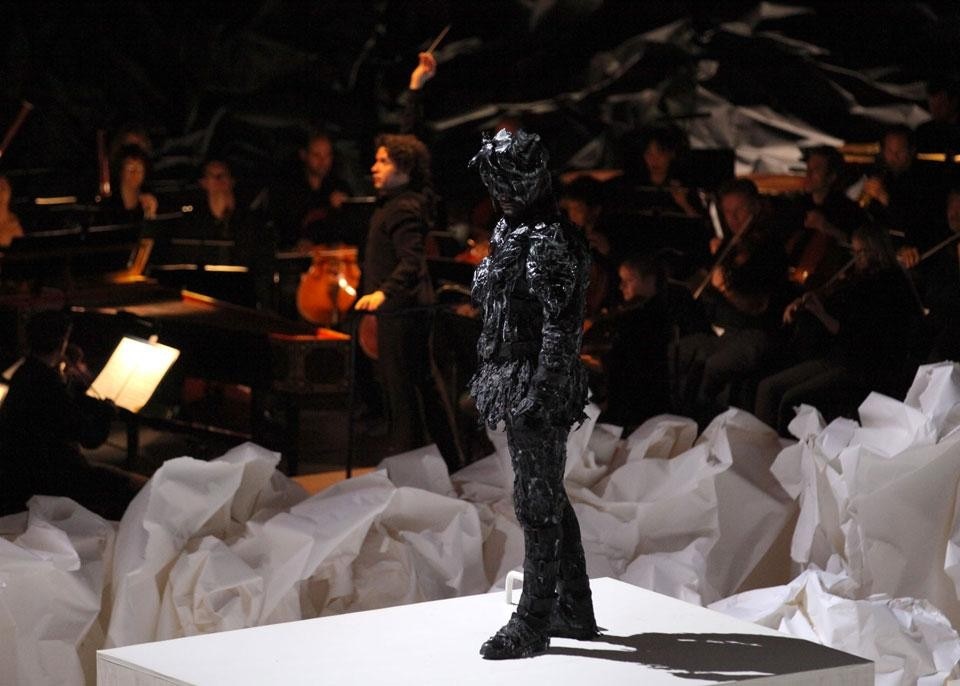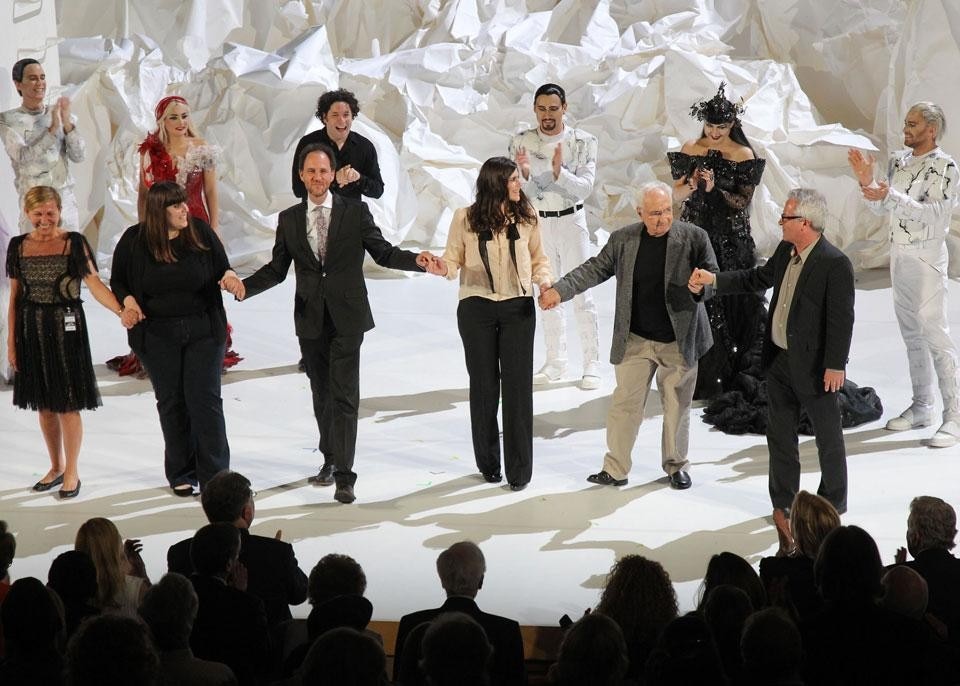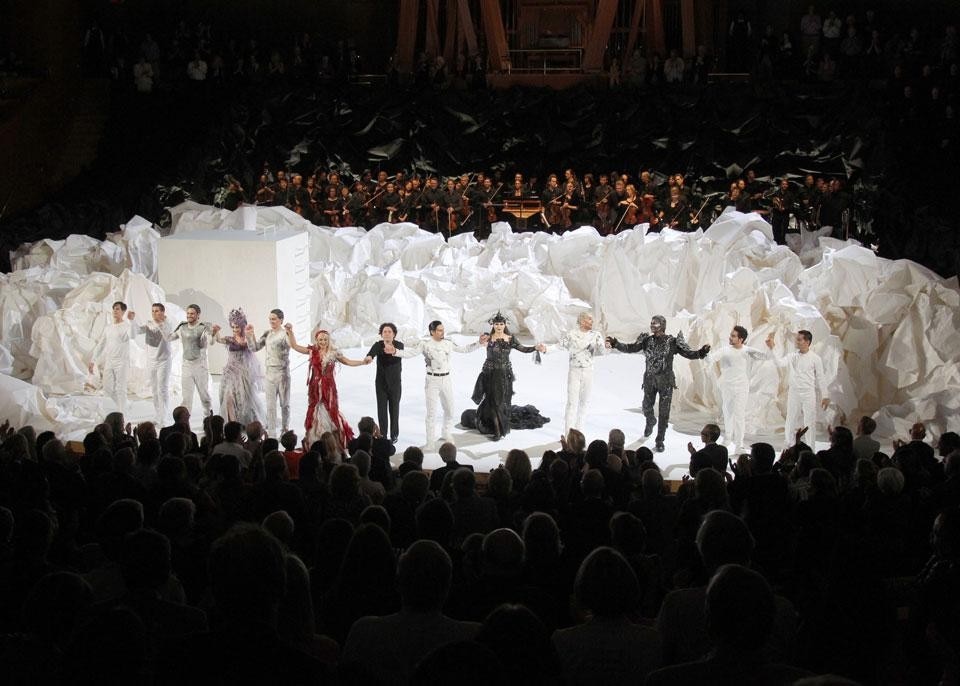Of course, we wouldn't put it past the Don (or Leporello, for that matter) to keep an actual tally in his journal, but we do assume this list is metaphorical. It's a pointed gesture, then, when Leporello turns to the set surrounding him and begins to read it as though it is, in fact, a scroll. This is perhaps the most literal reference to the set, designed by Frank Gehry, in the whole of the performance. After all, Gehry's stage, despite where our minds may wander with the story told, is a valley surrounded by crumpled paper. White boulders of paper embrace the actors on stage, and black bounds the orchestra on the platform behind them. The actors on stage can see the conductor, Gustavo Dudamel, on screens overhead. Gehry's "paper" stage calls to mind all shapes of allusions, including crumpled bed sheets and the wrinkled folds of the complex, confused and ruffled human brain. Leporello's use of the paper to ground a metaphor, then, is a brief and notable role reversal between the story and its setting. Outside these few moments, it's Gehry's stage that serves as the metaphor, elevating the libretto and music on paper.
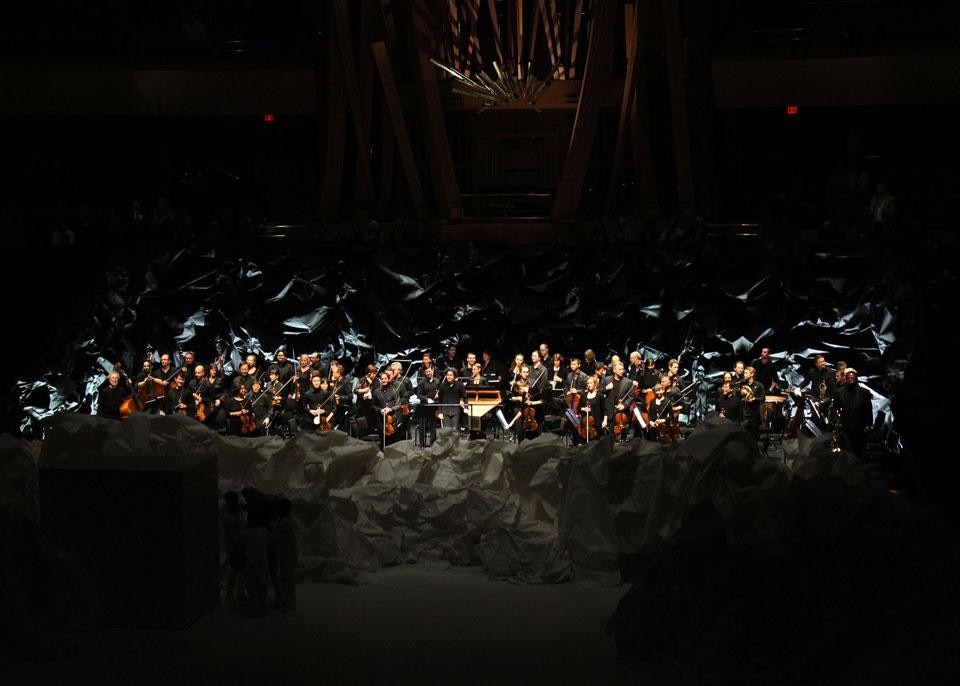
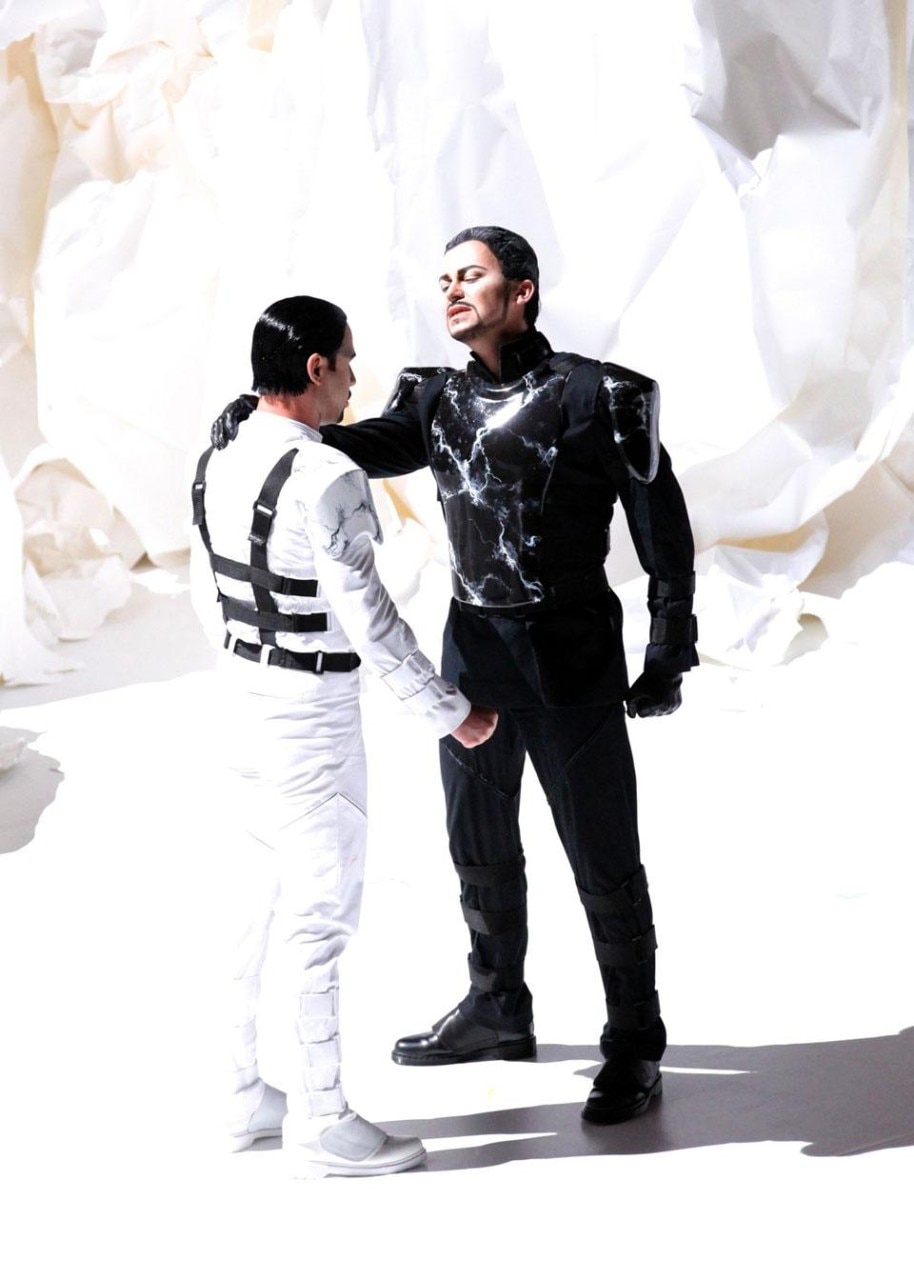
Free of expository props and context, the comprehensive design puts great emphasis, and pressure, on the actors to fill the stage, making for a very physical performance
